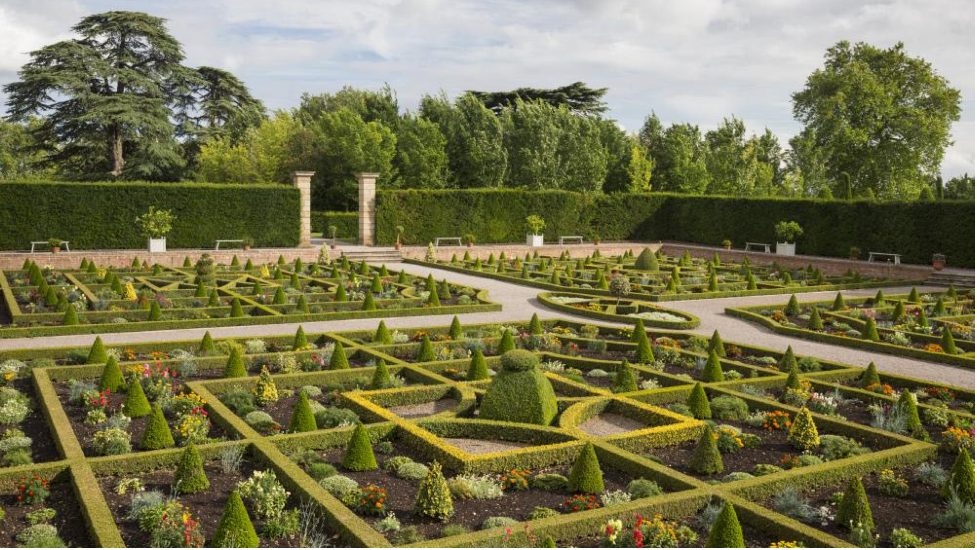By Johnny Moore and Michael Erickson
June 1, 2021
What is a garden? What is the nature and purpose of a garden? Why do we need gardens and how do they affect our daily existence? We each have an image of some archetypal garden and its function or lack thereof. Especially when working in perennial gardens, it becomes paramount to ask these questions to better design and appreciate these spaces. Understanding the history of the garden informs our design process so that our gardens are beautiful and can continue to grow without excessive help from the gardener.
The Enlightenment
The Enlightenment was largely characterized by man’s separation from nature by faculty of reason and the garden was not exempt from this intellectual movement. Plants were positioned in strict geometric patterns and trimmed into shapes with intense maintenance regiments. Order in the garden was perceived as its greatest strength and the gardener’s greatest accomplishment. Nature was seen as a force to be beaten rather than embraced and the garden of this era clearly displays man’s triumph over nature. This kind of garden tells us something about the universe and the way the people who made this garden viewed the world.
The Romantic Era
Roughly following The Enlightenment was the Romantic Era. Large estates traded the neatly kept expanses of geometric plantings for large swaths of grass, rejecting The Enlightenment’s emphasis on order and returning to the natural. These expansive lawns were not as much an invitation as a way to view large swaths of land from a primary vantage point. While there are many sub-styles within this garden period, it’s easy to see how a vision of the picturesque and idealized landscapes was developed. We see sweeping vistas, pastoral scenery often of mowed fields with copses of trees in the distance. Styles within the movement were also comprised of well laid out perennial beds, parterre gardens, and other such, high intensity maintenance gardens. These styles, though often more relaxed than the tight control of earlier garden styles, continued to require exhaustive maintenance.
World War II
Thanks to technological leaps made during World War II and other advancements in chemical production, the post war era saw the development of 2,4-Dichlorophenoxyacetic acid or 2-4D as an easy way to control weeds in crops. 2-4D is a broadleaf herbicide, killing weeds and leaving grasses like wheat and corn and consequently allowing both farmers and homeowners to control weeds without pulling them by hand. Before sod lawns, American lawns were comprised of both grass and clover, but the widespread use of 2-4D left only the grass and no clover, resulting in well-manicured lawns, but at the cost of ecological variation.
The lawn movement in America broke the with the natural rhythms that we once knew. Our need to understand plants’ connections to the soil and to one another disappeared and our relationship with nature became one of maintenance rather than stewardship.
Our Philosophy
At Tree of Life, our goal is to create gardens that are will thrive in the conditions that they are subject to. In this way, a Colorado garden is set apart from a Chicago garden by recognizing the uniqueness of each place. Understanding a site’s microclimates, soil composition and native plants allows one to connect a garden with its geographical location. This year’s Create Beauty Conference speaker, Thomas Rainer, talks about planting spaces as a way to reincorporate nature into our urban and suburban lives.
We will explore these ideas more on June 26th for our annual Create Beauty Conference with author and landscape architect, Thomas Rainer. For more information and tickets to the conference, visit our 2021 Events page on our website.





